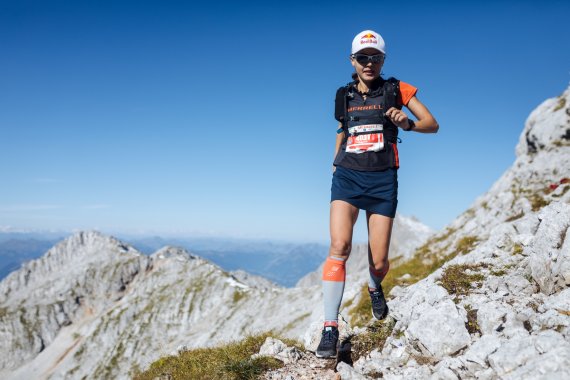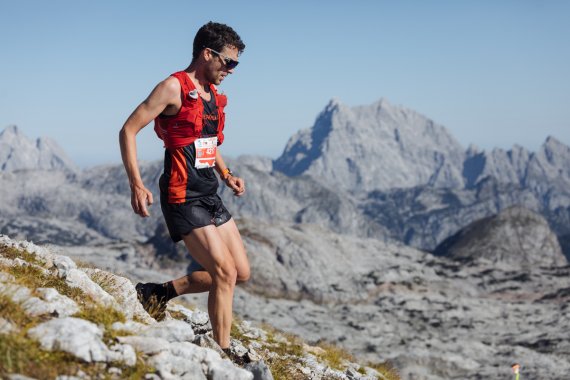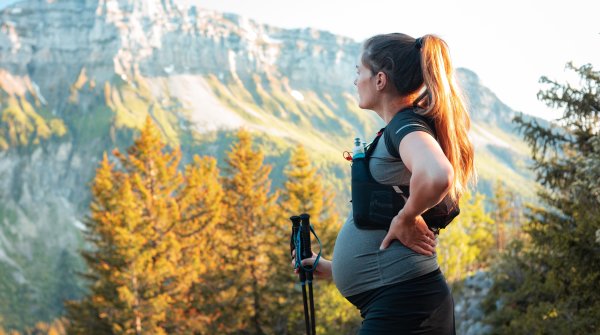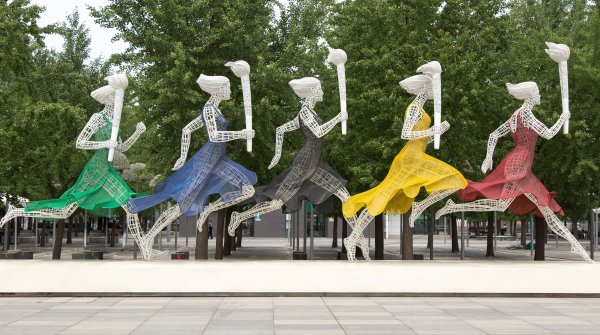
Higher, faster, further. That's exactly the motto for many trends. Add fascinating mountain landscapes and you end up with skyrunning. Breathtaking, both scenically and athletically. Uphill, steepest passages have to be overcome. Often the running speed must be adjusted, it is more scrambled than jogged. Downhill, speed and technical passages take the runners' breath away. In return, the adrenaline shoots through the bloodstream. The fascinating and technically most demanding form of trail running attracts more and more running enthusiasts and spectators at international competitions.
No wonder that trail running is becoming increasingly popular in the running scene. The most amazing adventures can be experienced in the middle of nature. In addition, the body is challenged in many ways. This variety brings the fascination of the sport and attracts more and more amateur runners to the mountains.
So what makes skyraces different from regular trail running? By definition of the International Skyrunning Foundation skyrunning means running in the mountains - at an altitude of 2000 meters or more. Parts of the course must have a gradient of more than 30 percent.
Quite steep. How can you run at all? Running speed is not the only speed. In skyrunning, the hands are often used to overcome steep sections. This sometimes involves climbing passages or over easy via ferratas. In some places steel ropes and chains give the runners additional safety, but this varies from place to place.
Climbs, however, never exceed the second degree of difficulty on the UIAA scale. So the focus is on running even in the locations high above the clouds.
Still, you need some technical skill, practice and experience to safely tackle these sections in trail running shoes. So skyrunning is the most technical discipline of trail running, guaranteeing thrills as well as great views and challenging, varied terrain.
In principle, there is a simple concept behind skyrunning races or skyraces for short: the start and finish are in a mountain village. From there, the race goes to one or more peaks and back again. It's about running uphill, but it's also about running downhill, because downhill is where races are usually won. And that in technical and very demanding terrain, with rock and scrambling passages, over steep tracks and mountain paths, along rocky ridges, past mountain huts and sometimes even over a glacier, such as at the Matterhorn Ultraks in Zermatt.
So you're only alone for stretches, skyrunning is also about the community with which you can celebrate your personal success in the evening after the run.
Admittedly, the fact that people move quickly on foot in the mountains is not new.
Thus, the first skyrunners can be counted among the former letter carriers who served the mountain villages, alpine shepherds who had to herd their animals quickly, or smugglers who transported their goods across the Alps as quickly as possible and unseen. And also in sporting competitions people have always liked to measure themselves by running. So it's no wonder that there are now a large number of events in the trail sector, and also in the high mountains in the form of skyruns.
Skyraces, i.e. races at higher altitudes in the mountains, are enjoying worldwide popularity. Across the globe there are now numerous races that lead through various beautiful alpine landscapes. The destinations of the competitions are often worth a trip on their own, even if you are only there to watch or cheer on the side of the course.
The Skyrunning World Series was held in 2021, for example, in 11 countries around the world over 13 races. The competition locations ranged from the Hochkönigman in Austria to races in Wales and Madeira.
At Skyraces, the number of participants on the course is limited and usually ranges between 200 and 400 participants. A small number of participants compared to the Berlin Marathon, for example, with around 30,000 starters. This also makes sense - it is simply not possible to have such a large number of people on the mountain at the same time and side by side. On the one hand, that would be too dangerous and on the other hand, too much of a burden on the alpine nature.
That's why the international Skyrunning Foundation has guidelines to keep the environmental impact of the events as low as possible. The crossing of protected zones or sensitive ecosystems must be avoided and basically no garbage is left behind. There are also official penalties for runners who throw away their trash along the way, ranging from time penalties to disqualification. In general, however, the scene is mindful of nature.
For the safety of the participants, the race course is marked with markings, so that even in bad weather the right way is visible. After the event, however, the markings are removed as quickly as possible.
And according to the association's specifications, the transport of food and, for example, tents for aid stations should, if possible, be carried out on foot without jeeps or helicopters, i.e. in the most environmentally friendly way possible.

Have you smelled a rat and would like to take part in a skyrace yourself? There are a few things to keep in mind: For some events, you have to meet a certain fitness level. When it comes to elite races, successes from other races must be proven.
In addition, for most races, runners must carry a certain amount of equipment, such as a rescue blanket or take it with them on the trail in case something happens between aid stations. However, each participant is informed about this during registration.
However, since not everyone wants to and can compete directly with the pros, there are different distances at most competitions. From the ultra distance to short beginner distances around 10 kilometers, there is something for every ability.
In the start and finish area, you can still meet the pros, exchange ideas and pick up helpful tips. At the same time, the different distances start at different times and you can experience the excitement and adventure of the other races on the course or in the finish area.
For example, in many Skyrunner World Series races there are shorter routes with less elevation gain, where you can approach if you have never participated in an alpine trail running event.
The advantage of the race is definitely adrenaline and ambition as an additional motivation. On top of that, the course is marked and advertised, you are running with like-minded people and if something should happen, help is not far away. On the shorter distances you are not yet in the high alpine area, the trails are more flowing and with less climbing.
The Hochkönigman as one of the biggest trail events in Austria, offers for example next to the Merrell Skyrace with a distance of 31.6 kilometers, the Hochkönigman also offers an Easy Trail for beginners, where 9.3 kilometers and 300 meters of altitude have to be overcome. With a little training, this is also doable for amateur runners who are new to trail running. Those who have been bitten by the trail running bug can approach the race slowly. Until there is no stopping above the clouds and on longer distances in the high mountains.
Further information and all dates for the Skyrunner World Series can be found online at
 Know-HowThe 11 Best TRX Exercises
Know-HowThe 11 Best TRX Exercises
- ISPO awards
- Mountain sports
- Bike
- Design
- Retail
- Fitness
- Health
- ISPO Job Market
- ISPO Munich
- ISPO Shanghai
- Running
- Brands
- Sustainability
- Olympia
- OutDoor
- Promotion
- Sports Business
- ISPO Textrends
- Triathlon
- Water sports
- Winter sports
- eSports
- SportsTech
- OutDoor by ISPO
- Heroes
- Transformation
- Sport Fashion
- Urban Culture
- Challenges of a CEO
- Trade fairs
- Sports
- Find the Balance
- Product reviews
- Newsletter Exclusive Area
- Magazine




